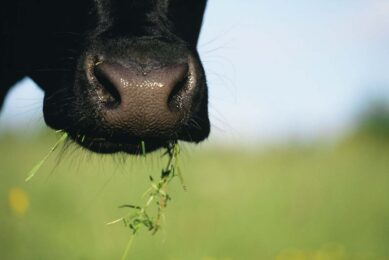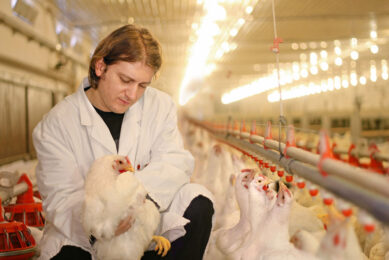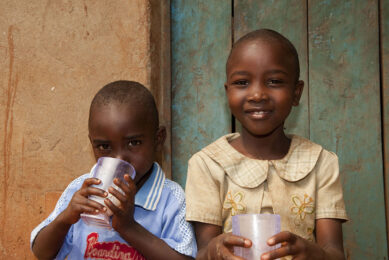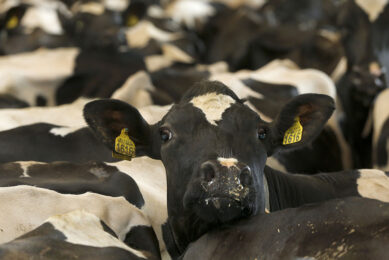“Farmers want easy and functional dairy cows”
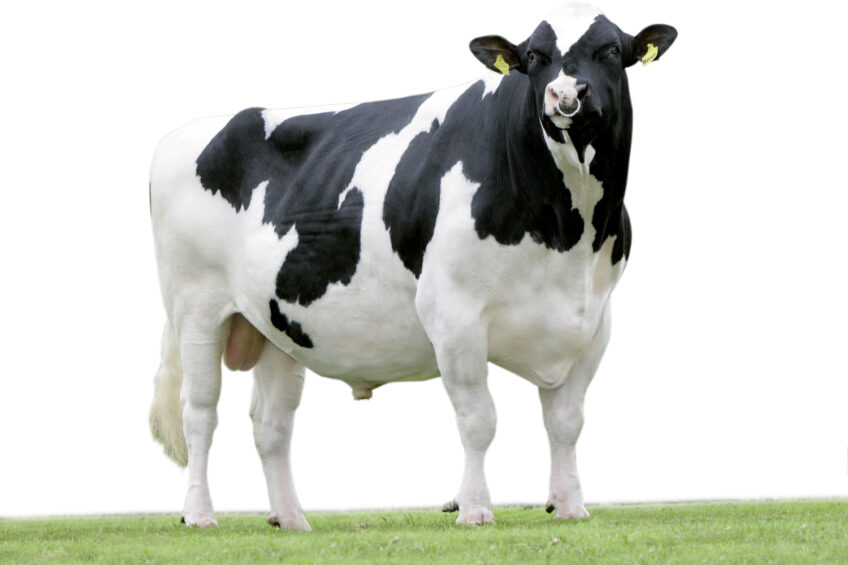
The Dutch breeding organisation K.I. SAMEN may not be the biggest breeding company around, it does have its own philosophy on how to breed the best dairy cow. And their vision is shared by farmers around the world. Dairy Global talked to the people behind this ambitious company.
The Netherlands is known for its knowledge on cattle breeding and dairy farming. A large chunk of the pie regarding breeding companies around the world is dominated by Dutch artificial breeding (AI) companies.
One of the Dutch players, acting on an international level, is situated in the south of the Netherlands. Gerbert Engelen is about to take over the baton from his father as managing director of Dutch breeding organisation K.I. SAMEN, founded in 1982. He adds that he is also taking over the vision his dad has and which made the company successful. Engelen explains that this vision is different from the rest of the international breeding companies. But what does it mean in practice? Engelen: “We aim to breed cows with common sense and patience, hence creating realistic expectations for the farmer. To achieve this goal we have our own dairy farm with 350 red and black & white Holstein cows, where we can see, test and evaluate the breeding programmes. Having the business and the dairy farm is a unique combination in the international breeding world and it gives us many advantages.”

Gerbert Engelen, managing director at K.I. SAMEN: “Talking about a cow ‘in balance’, we think that a dairy cow must be strong and a bit compact, with a height dimension of about 1.45 to 1.50 metres.”
Data gathered on farms
Jos Hooijer, sales and marketing manager at K.I. SAMEN further explains: “Worldwide, the focus is currently on breeding numbers, high indexes and short term views. But we lack in actually watching the cows properly. Fuelled by developments such as genomics, there is currently so much demand for bulls with high genomic index. And this can lead to cows that become unbalanced and a further narrowing of the bloodline of the Holstein population. We want to create realistic expectations with our clients by looking at the performance of the cows in practice and on our own dairy farm to see if the potential of the bull used is actually reflected in practice. To test a young bull in practice we sell at least 2,000 doses of this bull to clients, resulting in around 150 – 200 female offspring that start producing milk. Then we look at the different lactation periods, conformation of the animals etc. I think the data we gather here is of extreme value to the farmers we sell our products to,” explains Hooijer. This doesn’t mean the team of the Dutch breeding organisation is opposed new techniques such as genomics. Engelen says, “Genomics is a nice tool to calculate the genetic potential of bulls. They pull a hair from the bull’s ear and analyse its DNA. But what we see on farms is not always the same as what we thought we should see. This is where our vision differs from the larger breeding companies. We now have 200 bulls and have always gathered most of the data of the performance of the offspring of these animals in practice. For example, milk production in the second and third lactation is important information. We rather breed a dairy cow with a relatively slow start, which then increases her milk production in the second and third lactation. Genomics gives you data on many characteristics, but it is not realistic to breed a cow with a lot of characteristics that works opposite to each other. Make a choice in what characteristics you want to focus on, is our advice to farmers.”
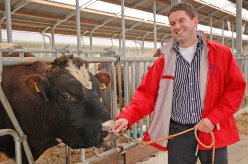
Jos Hooijer, sales and marking manager at K.I. SAMEN: “Internationally, we are expanding more and more. For example, in Canada, Latin America and New Zealand, potential is seen as farmers also demand easy to manage cows.”
A cow ‘in balance’
Engelen and Hooijer are strong advocates for a cow which is ‘in balance’. But what does that entail? Engelen states, “A good cow is not only an animal with the right front end and rump width. But we also look at the young animals. The young ones should be facing down compared with the rump. The older dairy cows have to be upstanding, with the head up. We see that cows have gone bigger over the years. At the same time, farmers have been starting to use other breeds to limit the further growth of the cows. Bigger cows is also what we don’t promote at K.I. SAMEN. And using other breeds is not necessary. There is still a huge amount of variation within the Holstein population. It is the largest breed in the world. Fleckvieh cattle, do have even more genetic defects in the breed compared to Holsteins. In other words, over generations you will run into similar challenges as we have with the Holstein breed. However, we should focus on a balanced way of producing high volumes. Talking about a cow ‘in balance’, we think that a dairy cow must be strong and a bit compact, with a height dimension of about 1.45 to 1.50 metres. We notice that these characteristics promote the cow’s functionality. In other words, the cows are easy to manage, have little problems with calving, strong legs and functional udders. And in terms of production: a cow in balance ideally starts with a production of 8,000 litres and moves on to 9,000 and 10,000 litres in the second and third lactation.” But no breeding organisation can do without any values or numbers. K.I. SAMEN uses also the aAa system for the selection. The system works with six groups of qualities: dairy (1), tall (2), open (3), strong (4), smooth (5) and style (6). It helps breed in traits for calving ease, fast milk let-down, room for the udder and high udders for modern milking. Other qualities in the categories include appetite, durable bones, attentive character and long breeding life. “We use this as an addition to our data gathered on the farms, to make sure we make a good and balanced selection. We try to use the number 5 bulls more often now, because we see that there is an oversupply of number 2 bulls, which produces tall and large and sharp cows,” Engelen explains.
Competing in the world of breeding
With a different philosophy, and not wanting to be dependent on genomics data, K.I. SAMEN is taking a risk in the competitive world of breeding. Hooijer: “It might not sound like a solid system we use, as we don’t jump on the bandwagon of new genetic techniques that are used to select bulls. On the other hand, we see that our approach is working, and we see little fluctuation in our breeding values. We rank the bulls according to the right information, hence reducing errors and overestimation. It is about going in the right direction and looking back on what you did, not about the speed of moving forward.” That will not change in 2030 according the company. Even larger companies that use milking robots find that strong and compact cows perform better in these systems. Internationally, K.I. SAMEN is expanding more and more. For example, in Canada, Latin America and New Zealand, potential is seen as farmers also demand easy to manage cows. And the new generation dairy farmers are more open to changing the breeding programmes, according to Hooijer. But the company also wants to stay strong and expand in the home markets: The Netherlands, Denmark, Germany and Belgium. “In the coming years I expect a further split in genomics development. Some farmers will still choose for the “super” breeding stock from large breeding companies. Other farmers will move over to easy to manage cows, which can easily fit in different farming systems. The hype of crossing Holsteins with other breeds will be less popular and I expect that more farmers will choose the back to basics approach. At the same time we are aware of the image of the dairy industry among consumers and the sustainability issues. How do you explain to consumers that some dairy cows only reach one lactation period before they are replaced again? We therefore think that increasing the longevity of the cows is a sustainable option. Especially for the farmer, as cows have time to reach their full potential,” Hooijer adds.
Join 13,000+ subscribers
Subscribe to our newsletter to stay updated about all the need-to-know content in the dairy sector, two times a week.





